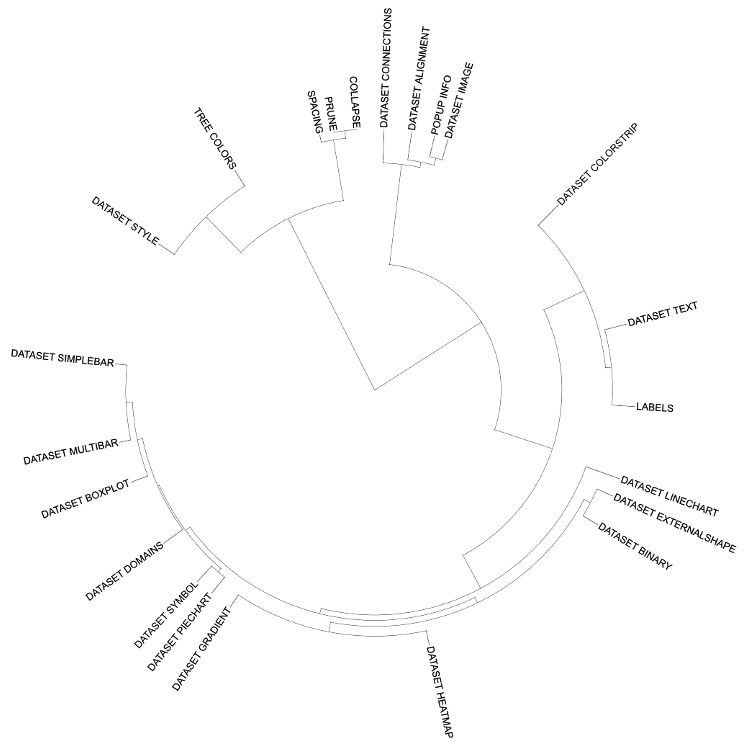
SPACING
Introduction
The function of SPACING template is to adjust the branch spacing. Its parameter structure is simple, consisting only of template types and data. The SPACING template belongs to the “Tree structure” class (refer to the Class for detail information).
Users typically adjust the spacing of branches by entering branch names and spacing values. The function of this template is very simple.
This section shows how to use itol.toolkit to adjust the spacing of branches. The process is very simple, and the main difficulty is that the user needs to determine which branches need to be adjusted. Without itol.toolkit, users would have to perform data analysis and visualization preparation in fragmented environments. itol.toolkit provides consistency to the workflow, allowing users to filter branches based on background information in R environment and output template files seamlessly.
Basic use
This section uses dataset 1 as an example. (refer to the Dataset for detail information)
The first step is to load the newick and . The following example data df_frequence contains the usage of each template type in published studies.
The purpose of our data processing in this section is to adjust the spacing of the branches.Based on usage data, the greater the usage, the greater the spacing of template types.
library(itol.toolkit)
library(data.table)
tree <- system.file("extdata",
"tree_of_itol_templates.tree",
package = "itol.toolkit")
df_frequence <- fread(system.file("extdata",
"templates_frequence.txt",
package = "itol.toolkit"))
Sum the frequency of each template type used in published papers. In order to make the text content clear, the global font size has been adjusted to 35 on the iTOL console, with a rotation of 180 degrees, and an included angle of 180 degrees. To avoid overlapping when resizing fonts, set a base spacing of 2.
The final data has two columns: tip id and its corresponding space.
df_frequence <- data.frame(template = df_frequence$templates,
value = rowSums(df_frequence[,-1],na.rm = T) + 2)
unit_6 <- create_unit(data = df_frequence,
key = "E006_spacing_1",
type = "SPACING",
tree = tree)
write_unit(unit_6)